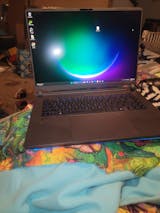Console gaming enthusiasts can tell you all about the perennial rivalry between PS4 and Xbox One, but PC gaming enthusiasts have their own feud to follow. NVIDIA invented the graphics processing unit back in 1999, but that didn’t stop AMD from debuting Radeon graphics technology for high-end gaming and 3D workstations within less than one year. This ongoing rivalry has led to a surge in innovation and competitive pricing that benefits the consumers. If you are in the market for a new GPU and you’re not sure where to start, XOTIC PC can help. In this guide, we explore the perennial AMD vs. NVIDIA feud that every PC gaming enthusiast faces in the pursuit of a powerful GPU.
AMD Radeon vs. NVIDIA GeForce GTX
Unless you’ve pledged your loyalty to one of these tech behemoths, it can be daunting and difficult to decide between graphics cards.
Exclusivity: One of the biggest rumors about the AMD vs. NVIDIA rivalry is that they were enticing game developers to show preferential treatment. Though this rumor hasn’t been proven to be true, it would certainly explain why certain games perform better using one GPU in lieu of the other and vice versa. In interviews, AMD spokespersons proclaim that exclusivity is not in the cards and that they will continue to support game developers with open source standards. Although NVIDIA recently shuttered their controversial GeForce Partner Program, they claimed that the GPP wouldn’t get in the way of manufacturers using AMD graphics cards. If one of your favorite games features AMD or NVIDIA on the title page when you boot it up, there is a good chance that the game will run better with that branded hardware.
Features: Even for those of us who might not be as savvy about the software included in our graphics cards, there’s no reason to settle. PC enthusiasts that gravitate to NVIDIA often do so because of GeForce Experience software, in which you can capture your best moments of gameplay, address performance issues, optimize settings, and so much more. AMD competes with the success of GeForce Experience by debuting their own software, the Radeon Adrenalin Edition. This software comes with Radeon Overlay, which allows you to monitor FPS and PC performance, as well as share in-game action, minimize tearing, and experiment with color settings. Both will deliver driver updates.
Performance: Cryptocurrency is affecting the GPU market in several ways. Bitcoin media forces higher prices on PC gaming enthusiasts, because miners are buying them in bulk to build high-end machines that mine cryptocurrencies. Although AMD used to lead the GPU market in terms of value, NVIDIA is quickly surpassing them in terms of price to performance. The RX Vega 64 might be better at rendering texture details and complex shading, but it still falls short of the GTX 1080 in multi-rendering and simulation. The same can be said of more affordable RX and GTX graphics.
Radeon vs. GeForce Conclusion
There is so much to like and dislike about AMD and NVIDIA. Suffice it to say that both tech behemoths rely on rivalry, and there’s a reason why Radeon and GeForce GPUs come so close in performance. Ultimately, the decision is up to you. NVIDIA is the uncontested champion of the GPU market share, especially in terms of 4K, but that doesn’t mean that you should overlook AMD.














